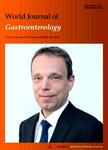Is ineffective esophageal motility associated with gastropharyngeal reflux disease?
Is ineffective esophageal motility associated with gastropharyngeal reflux disease?作者机构:Department of Internal MedicinePusan National University School of MedicineBusanSouth Korea Department of OtolaryngologyPusan National University School of MedicineBusanSouth Korea Department of PathologyPusan National University School of MedicineBusanSouth Korea
出 版 物:《World Journal of Gastroenterology》 (世界胃肠病学杂志(英文版))
年 卷 期:2008年第14卷第39期
页 面:6030-6035页
核心收录:
学科分类:1002[医学-临床医学] 100201[医学-内科学(含:心血管病、血液病、呼吸系病、消化系病、内分泌与代谢病、肾病、风湿病、传染病)] 10[医学]
基 金:A grant of The Korean Institute of Medicine
主 题:Ineffective esophageal motility Gastroesophageal reflux disease Gastropharyngeal reflux disease
摘 要:AIM: TO evaluate the association between IEM and gastropharyngeal reflux disease (GPRD) in patients who underwent ambulatory 24-h dual-probe pH monitoring for the evaluation of supraesophageal symptoms. METHODS: A total of 632 patients who underwent endoscopy, esophageal manometry and ambulatory 24-h dual-pH monitoring due to supraesophageal symptoms (e.g. globus, hoarseness, or cough) were enrolled. Of them, we selected the patients who had normal esophageal motility and IEM. The endoscopy and ambulatory pH monitoring findings were compared between the two groups. RESULTS;: A total of 264 patients with normal esophageal motility and 195 patients with the diagnosis of IEM were included in this study. There was no difference in the frequency of reflux esophagitis and hiatal hernia between the two groups. All the variables showing gastroesophageal reflux and gastropharyngeal reflux were not different between the two groups. The frequency of GERD and GPRD, as defined by ambulatory pH monitoring, was not different between the two groups. CONCLUSION: There was no association between IEM and GPRD as well as between IEM and GERD. IEM alone cannot be considered as a definitive marker for reflux disease.



